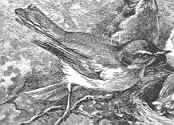http://rufuspollock.org/2010/10/11/papers-on-the-size-and-value-of-eu-public-domain/
This is a study in a European context similar to Paul J. Heald's survey of American best-selling novels, which can be found at
http://papers.ssrn.com/sol3/papers.cfm?abstract_id=955954
Professor Heald surveyed works of fiction. Pollock surveys both books and sound recordings. For books he surveys a much larger sample than Professor Heald surveyed.
Back in 1998 I did a cursory survey of paperback song books, and found that incorporation of public domain content lowered the average price per book and the average price per song. As I surveyed these books, I quickly encountered problems of definition. What is a "pubic domain" song? What was a "public domain" book? My solution was to limit the survey to paperback books with piano-vocal arrangements. If more than 90% of the melodies in a book were public domain melodies (though the accompaniments might be copyrighted) then that book counted as "public domain" for the purposes of the survey, though obviously the book-as-a-whole and many of its components were under copyright. If more than 90% of the melodies in a book were under copyright, then that book counted as "copyrighted" for the purposes of the survey.
Pollock et al. deal with similar questions of classification. Is a book "public domain" if it is a public-domain novel but with copyrighted introduction and notes? The authors very reasonably say yes in this case as long as it contains the full PD text and the PD text is most of the book. A book that is more notes than underlying text is classified in a separate "YN" (Yes PD, but Notes) category. Altogether, the authors develop seven categories of classification of about sixty-four thousand books according to public domain content. Unsurprisingly, when a book is promoted from copyright to public domain, publishers bring to market competing editions in all price categories, from low-priced budget editions to high-priced luxury editions. This wide range of prices, as well as the value that might be added to some of the new editions by additional matter such as notes, complicates average-price computations. Limiting the comparison of prices to the low-price and middle-price editions (i.e. excluding the highest-priced editions, a technique called "right truncation") shows that publishers are offering public domain works to the public at average selling prices that are four to six percent lower than the prices at which they are offering copyrighted works. This is consistent with the results of Professor Heald's earlier, smaller study of best-selling American fiction.
The authors' survey of sound recordings draws fewer distinctions than the survey of books. A recording is considered "public domain" if the copyright in the sound recording has expired, regardless of the copyright status of the music that has been recorded. While a more sophisticated survey would also examine the importance of public domain music to the price and availability of musical works on copyrighted recordings, the authors' focus on the recording copyright alone is reasonable in light of the ongoing debate in Europe over extending the term of the phonogram copyright. Pollock et al. found that pop-music recordings were on the average roughly seven percent cheaper one year after expiration of their phonogram copyright than they had been one year before expiration.
Besides the analysis of the data, the authors transmit some anecdotal information gathered in the course of the study. According to them
one organization, involved in providing recordings for soundtracks to films and televesion, indicated that out-of-copyright recordings would be 70% cheaper than in copyright ones (£20 thousand to £6 thousand fee).At the foot of the page (at the time of this writing) is the following, rather chilling, footnote number 11:
The organization explicitly requested to remain anonymous due to fears that an attributed statement could jeopardize his relationship with the large music labels.This very anonymity makes it difficult to evaluate the ancecdote. What were the "recordings" the organization "provided"? What is the "copyright" referred to in the anecdote: a copyright in the music or a copyright in a recording? And so we know less than we might, apparently because the major labels have given one worker in the music business the impression that they are afraid of the truth, and will retaliate against those who speak it.



No comments:
Post a Comment